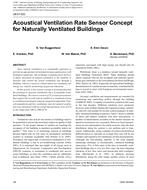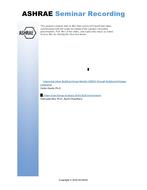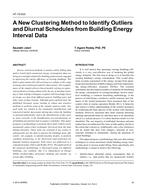Click here to purchase
Weather patterns around the globe have been influenced by climate change, often contributing to adverse effects in outdoor air quality. Efforts to improve energy efficiency in homes and buildings have led to tighter structures. However, these changes can also produce negative consequences for indoor air quality (IAQ) and human health. One of the dramatic effects of climate change and weather is the increase in destructive wildfires, such as those experienced in the Pacific Northwest over the summers of 2014 and 2015. Much literature and conjecture predict that these types of fires are expected to increase in intensity, not only in the Northwest, but in other wildfire-prone areas as well. This raises the following questions: What is the expected performance of homes and IAQ under forecast changes in weather patterns predicted by climate change? What chemicals were present in smoke that traveled hundreds of miles from the fires and infiltrated IAQ test homes? What was the IAQ in these test homes before, during, and after the wildfire events? This paper presents data for two houses during periods with and without wildfire impacts with very high levels of smoke in the region. Concurrent, continuous measurements indoors and outdoors were completed for CO, CO2, NOx, O3, VOCs, and PM2.5 in two houses each instrumented to track occupant behavior including use of windows and doors. A CO2 tracer method was used to directly measure ventilation rates and blower door tests were also completed to document standard ventilation rates. Collectively, these data show the dramatic changes in IAQ associated with periods of elevated smoke and also with occupant use of doors and windows. We also present results obtained using the CONTAM indoor air quality model in comparison to the measured conditions. These results provide a basis for considering how future climate changes affecting the occurrence of wildfires may impact indoor air quality and occupant behavior.
Citation: ASHRAE and AIVC IAQ 2016 Conf
Product Details
- Published:
- 2016
- Number of Pages:
- 14
- Units of Measure:
- Dual
- File Size:
- 1 file , 4.3 MB
- Product Code(s):
- D-2016IAQ-11


